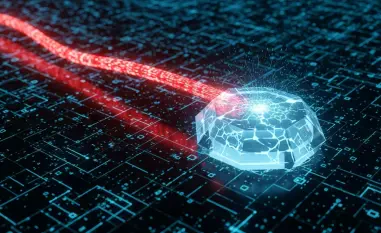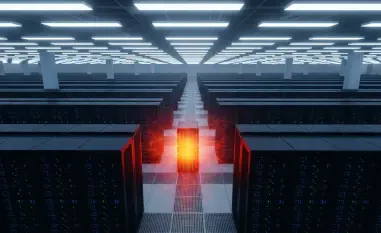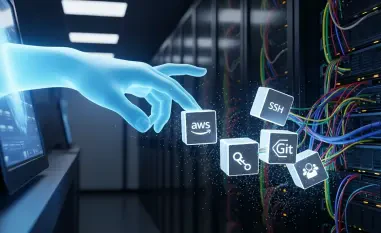Overview of the Cybersecurity Landscape
In the fast-evolving world of cybersecurity, Security Operations Centers (SOCs) are grappling with an unprecedented challenge: a daily deluge of alerts that can number in the thousands, creating immense pressure on analysts to act swiftly. Imagine a SOC analyst staring at a screen filled with potential threats, each demanding immediate attention, while the clock ticks down on a possible breach. This scenario is not hypothetical but a stark reality for many organizations in 2025, where the sheer volume of data threatens to overwhelm even the most seasoned teams. The pressure to identify genuine threats amidst the noise has never been higher, as attackers grow more sophisticated and persistent.
The industry is at a critical juncture, with SOCs often operating under constrained budgets and limited staff. This resource scarcity exacerbates the difficulty of managing alerts effectively, making prioritization a Herculean task. The stakes are immense—missing a critical alert could lead to devastating data breaches or financial losses. As cyber threats continue to target entire industries and regions, the need for innovative solutions to streamline alert triage is no longer optional but imperative for maintaining robust defenses.
Detailed Analysis of Alert Triage Challenges and Solutions
Understanding the Alert Triage Challenge in Modern SOCs
Security Operations Centers today face an uphill battle against an overwhelming influx of alerts generated by Security Information and Event Management (SIEM) systems. On any given day, analysts must sift through hundreds or even thousands of notifications, each potentially signaling a catastrophic breach. This volume creates a bottleneck, as manual investigation consumes valuable time that could be spent on proactive defense measures, leaving organizations vulnerable to attacks that slip through the cracks.
Alert triage, the process of prioritizing and investigating these alerts, stands as a cornerstone of effective cybersecurity. Yet, with limited resources and time, SOCs struggle to keep pace with the speed and complexity of modern threats. Analysts often find themselves in a reactive mode, addressing issues only after damage has begun, rather than preempting them. This challenge is compounded by the lack of contextual data, which is essential for distinguishing between benign anomalies and genuine threats.
The broader industry context reveals a heavy reliance on technological solutions like SIEM tools and threat intelligence services to manage this crisis. Key players in the market are pushing for real-time data integration to enhance decision-making capabilities. As cyber threats become more coordinated, the demand for dynamic, up-to-date intelligence is shaping the direction of cybersecurity investments, with a clear trend toward systems that can process and act on information instantaneously.
Leveraging Collective Defense: The Power of Shared Intelligence
The Importance of Contextual Threat Data
Context is king when it comes to alert prioritization in SOCs. Understanding whether a flagged IP address or file hash is part of a larger attack pattern across industries can mean the difference between a timely response and a costly oversight. Contextual threat data provides the bigger picture, enabling analysts to recognize recurring indicators of compromise (IOCs) that might otherwise appear isolated or insignificant within their own networks.
A significant trend driving the industry forward is the rise of collective defense, where global security communities pool their intelligence to combat sophisticated threats. By sharing insights on attack behaviors and IOCs in real time, organizations can benefit from the experiences of others, enhancing their own detection capabilities. This collaborative approach is gaining traction as a vital strategy for staying ahead of adversaries who often reuse tactics across multiple targets.
Real-time data sharing is emerging as a major market driver, pushing the boundaries of threat detection and response times. Platforms that facilitate instant access to shared intelligence are becoming indispensable tools for SOCs looking to shift from isolated operations to a more interconnected defense model. This shift promises not only faster identification of threats but also a more resilient cybersecurity ecosystem as a whole.
Impact of Industry-Wide Attack Trends
Attackers frequently target entire industries or geographic regions rather than individual entities, exploiting common vulnerabilities within specific sectors. For instance, financial services or healthcare providers often find themselves in the crosshairs of coordinated campaigns that leverage tailored malware or phishing tactics. Recognizing these patterns through shared data allows organizations to anticipate threats before they strike their own systems.
Looking ahead, understanding attack campaigns against peers can transform SOCs from reactive to proactive defenders. By analyzing industry-wide trends, analysts can hunt for early signs of compromise rather than waiting for an attack to manifest fully. This predictive approach, supported by collective intelligence, empowers organizations to fortify their defenses based on the experiences of others in their sector, potentially preventing breaches before they occur.
Performance metrics underscore the value of shared intelligence, with studies showing reduced detection times for organizations participating in collaborative platforms. Growth projections for such systems are optimistic, with expectations of significant expansion in adoption rates over the next few years, from 2025 to 2027. As more SOCs join these networks, the depth and accuracy of available data will only improve, further enhancing industry-wide security.
Overcoming Barriers in Alert Triage with Limited Resources
Alert fatigue remains a pervasive issue for SOCs, where the constant barrage of notifications dulls analysts’ ability to focus on critical threats. Coupled with manual investigation bottlenecks, this creates a vicious cycle of inefficiency, as teams spend hours validating alerts without sufficient context to guide their efforts. The result is often delayed responses, increasing the risk of successful attacks.
Technological hurdles also impede progress, particularly in integrating external threat data into existing workflows. Many SOCs struggle with compatibility issues between disparate systems, which can hinder the seamless adoption of shared intelligence. However, solutions such as automated tools and standardized data formats are emerging to bridge these gaps, enabling smoother incorporation of external insights into daily operations.
To mitigate resource constraints, SOCs can turn to platforms designed for efficiency, such as specialized threat intelligence lookup services. These tools streamline the triage process by providing instant validation of IOCs, reducing the burden of manual analysis. By leveraging such technologies, even understaffed teams can prioritize alerts more effectively, focusing their limited resources on the most pressing threats.
The Role of Threat Intelligence Platforms in Enhancing Security
Threat intelligence platforms are reshaping the operational landscape for SOCs, offering critical support in the form of actionable data. Services that aggregate live attack intelligence from thousands of sources provide analysts with the means to validate alerts quickly and accurately. This capability is essential for cutting through the noise and focusing on real threats rather than false positives.
Compliance with data-sharing standards and privacy considerations remains paramount in this space. Platforms must ensure that sensitive information is handled securely, maintaining trust among participating organizations. Adhering to established protocols not only protects individual SOCs but also fosters a collaborative environment where intelligence can be exchanged without compromising confidentiality.
The impact of these platforms on SOC practices is profound, as they enable instant IOC validation and support secure, collaborative defense strategies. By integrating such tools into their workflows, analysts can make informed decisions with greater confidence, knowing their actions are backed by real-world attack data. This shift toward data-driven triage enhances overall security posture, making SOCs more agile and responsive.
Future of Alert Triage: Scaling with Global Intelligence
Looking to the horizon, alert triage is poised for transformation through innovations in collective intelligence and real-time data integration. The ability to tap into a vast network of SOCs worldwide offers unprecedented visibility into emerging threats, allowing organizations to adapt swiftly to new attack vectors. This global perspective is set to redefine how alerts are prioritized and addressed.
Potential disruptors such as advanced automation and AI-driven analysis are expected to play a pivotal role in this evolution. These technologies can process massive datasets at speeds unattainable by human analysts, identifying patterns and correlations that might otherwise go unnoticed. Additionally, the expansion of global SOC networks will further amplify the benefits of shared intelligence, creating a more interconnected defense framework.
As attacker techniques continue to evolve, the need for broader collaboration will become even more pressing. Influenced by global cybersecurity trends and economic factors, SOCs must prepare for increasingly sophisticated threats that transcend borders. Embracing scalable intelligence solutions will be crucial for staying ahead, ensuring that alert triage keeps pace with the dynamic nature of cyber warfare.
Reflections and Path Forward
Reflecting on the insights gathered, it becomes evident that live attack data from a network of 15,000 SOCs offers a transformative edge in alert triage during this period of analysis. This collective intelligence reshapes how threats are identified and prioritized, turning isolated efforts into a unified front against cyber adversaries. The journey highlights the power of shared knowledge in fortifying defenses across industries.
Moving forward, SOCs are encouraged to adopt advanced threat intelligence tools to enhance their decision-making processes. Integrating platforms that provide instant access to global attack data proves to be a game-changer, enabling teams to act with precision and speed. The focus shifts toward building partnerships and investing in technologies that support real-time collaboration, ensuring sustained resilience.
As a final consideration, the cybersecurity community is urged to advocate for standardized practices in data sharing to maximize the impact of collective defense. By fostering trust and transparency, organizations can unlock even greater potential in combating threats. This collaborative spirit, backed by innovative solutions, lays a strong foundation for navigating the complex threat landscape ahead.













